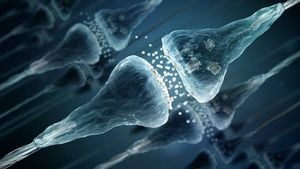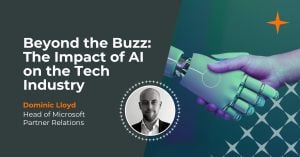Across the increasingly complex world of science and technology, researchers are unearthing new miracles of nature and ingenuity, transforming conventional notions of computing and problem-solving. Perhaps one of the most fascinating instances is the recent work conducted by scientists at the Saha Institute of Nuclear Physics in Kolkata, who have engineered bacteria capable of performing functions traditionally reserved for computers.
Led by synthetic biologist Sangram Bagh, the team set out to explore how bacteria, usually seen as single-celled organisms, could mimic the sophisticated operations of artificial neural networks. This groundbreaking study published in Nature Chemical Biology has prompted significant interest within the scientific community, including insights from experts like Pawan Dhar, who commented on this novel development as the dawn of programming bacteria to engage with complex mathematics.
The research showcases engineered bacteria capable of making classifications such as determining whether numbers are prime and identifying vowels within the alphabet. "Such tasks were previously thought to be explicit to humans or traditional computers," Bagh noted. This advancement challenges the commonly held beliefs about the scope and meaning of intelligence itself.
Innovation emerged through the introduction of what the researchers termed 'genetic circuits' activated by chemical stimuli. By utilizing various engineered bacterial strains, each acting like "bactoneurons," the team created bacterial computers, which could collaboratively perform complex calculations similar to multicellular organisms. This synthesized network mirrors how biological processes work, but also dives deep toward potential applications ranging from pharmaceuticals to biomanufacturing, potentially revolutionizing multiple sectors.
Explaining the mechanics behind it, Bagh emphasized the importance of molecular biology techniques employed to introduce transcriptional genetic circuits within strains of Escherichia coli. The approach relies heavily on transcription, wherein bacteria transcribe segments of their DNA to RNA, enabling them to produce proteins. To trigger these responses, transcription factors recognize specific DNA sequences called promoters, initiating the transcription process. This method allowed Bagh's team to program and tune bacteria to perform calculations just by adjusting chemical inputs.
On the other side of the spectrum, the educational sector is also witnessing transformative potential with the introduction of artificial intelligence. Salman Khan’s book, A Brave New Education, exploring the impacts of educational technology, advocates for the intelligent integration of AI tools within learning environments. Khan, the founder of Khan Academy, emphasizes AI as more than just computational assistance; it’s about personalizing education to suit individual learning habits and paces. This idea is not about replacing teachers but providing them with powerful tools to cultivate more successful learning experiences.
At a seminar held recently, Khan discussed how AI could address deep-rooted educational challenges absent from current methodologies. Rather than seeing AI as competition, educators are called upon to embrace it as support, enhancing their ability to nurture students' unique skills. The discourse laid out by Khan delineates how AI could shape future learning landscapes, empowering teachers to focus on creative problem-solving and innovative thinking.
Echoing these ideas, experts also underline the necessity of fostering skills like creativity and autonomy among students. For example, engineering disciplines echo similar sentiments as stressed by educators highlighted recent publications from the Journal of Engineering Education, acknowledging self-directed and persistent learning styles as key components of effective problem solvers.
Meanwhile, the overlapping realms of biocomputing and education are reinforcing the narrative about embracing complexity and creativity as indispensable in current and future work environments. Students trained to persist through challenges gain higher problem-solving faculties and innovative capabilities—qualities deemed non-negotiable as industry demands evolve swiftly due to technologies like AI and biocomputing.
This synthetic biology leap signals not only scientific marvels but invites consideration of broader educational reforms and curriculum adaptations. The ideas posited by Khan and Bagh compel us to reckon with the significance of not merely using technology effectively but cultivating the mindset and skill sets necessary to manage these advancements ethically and innovatively.
Biocomputing's rise provokes pivotal questions: What does it mean to be intelligent, and how can proteins or genetic elements mirror human thought processes? One wonders if this exploration could redefine what's perceive as computational capacity, potentially opening pathways toward fully autonomous biological machines or enhanced human-computer interactions.
Evidently, as engineering educators are encouraged to embrace self-directed learning paradigms, learners can more effectively consolidate their knowledge through practical problem-solving experiences, producing graduates who are not just consumers of information but creators and innovators. The interplay between biological transformation and educational reform, with AI at their cores, paints an intriguing picture of the future—one where intelligent design and technology converge for unprecedented solutions.
Through thoughtful engagement with both these fields, we may very well arrive at solutions for today's pressing challenges—not through reliance on existing frameworks but by crafting entirely new paradigms of learning and computation. The fluidity of these connections between matter and thought, between programming and education, forms the fertile ground needed to grow future leaders and innovators.
To sum it all up, the work of manipulating biological entities for computation alongside the embrace of AI’s transformative potential within learning environments signals just the beginning. The intricacies of technology not only demand technical adjustments but also require renewal in our pedagogical approaches, culminating most constructively around enriching the synergy of creativity, problem-solving, and everywhere intelligence thrives, whether biological or artificial.



